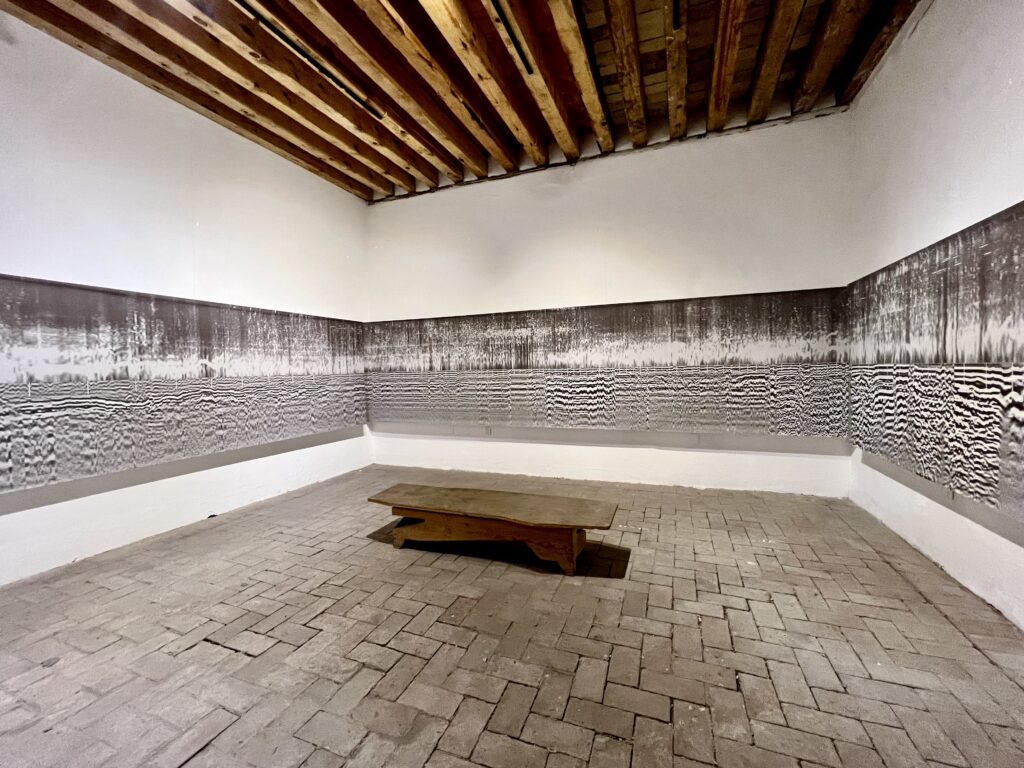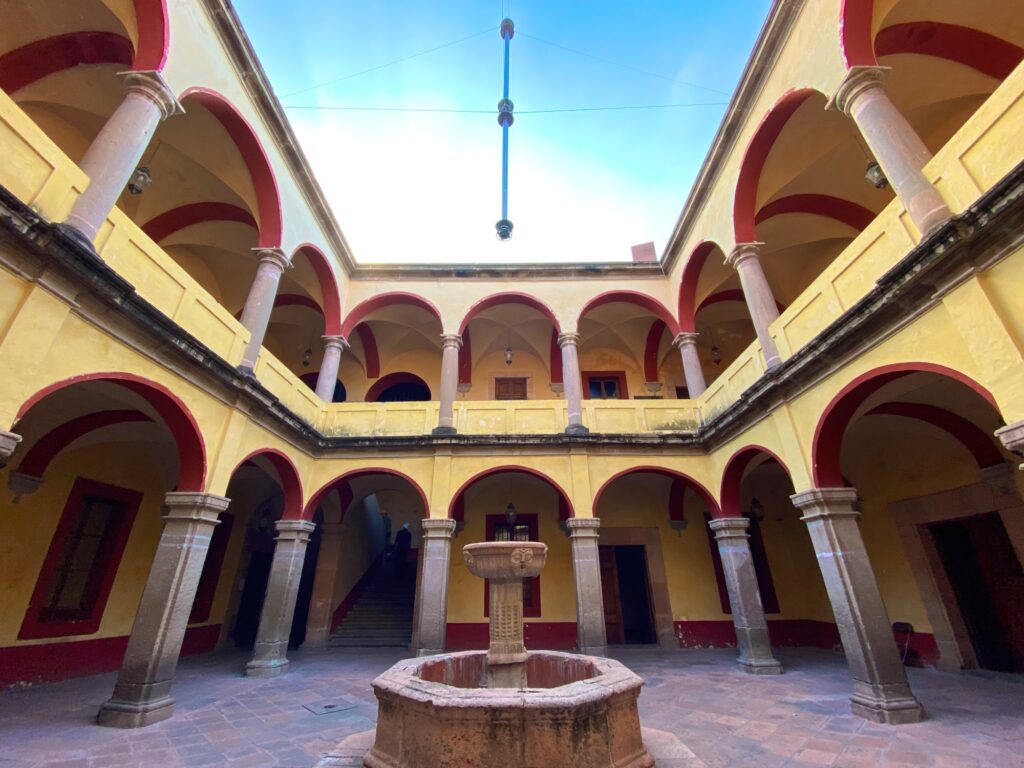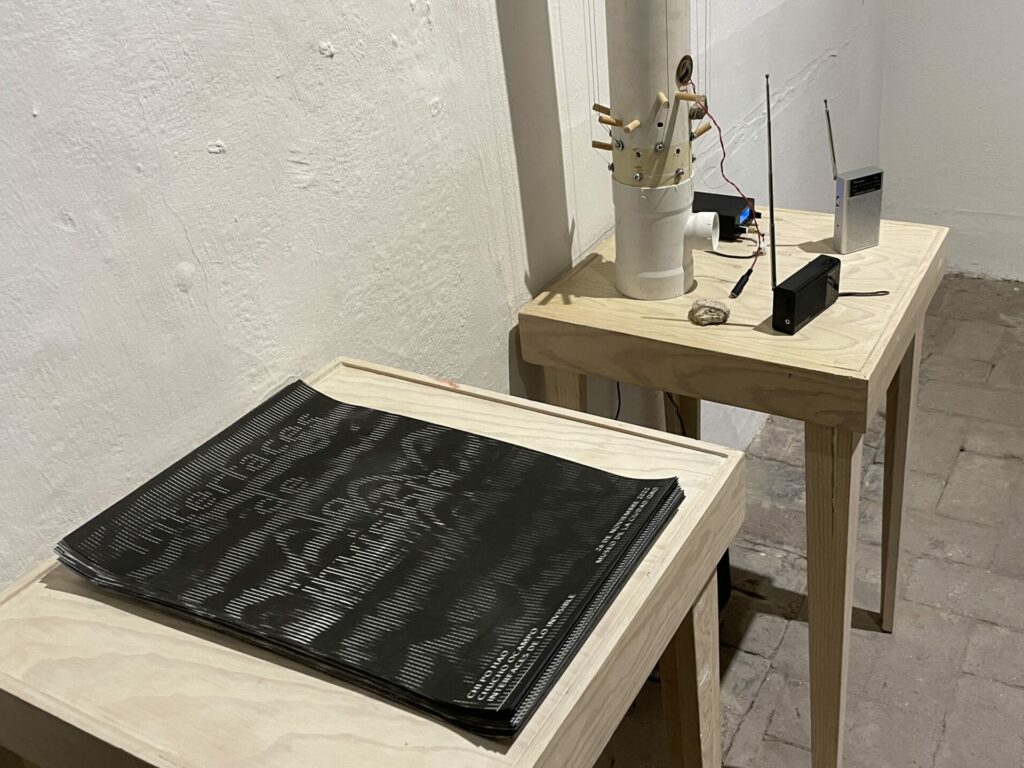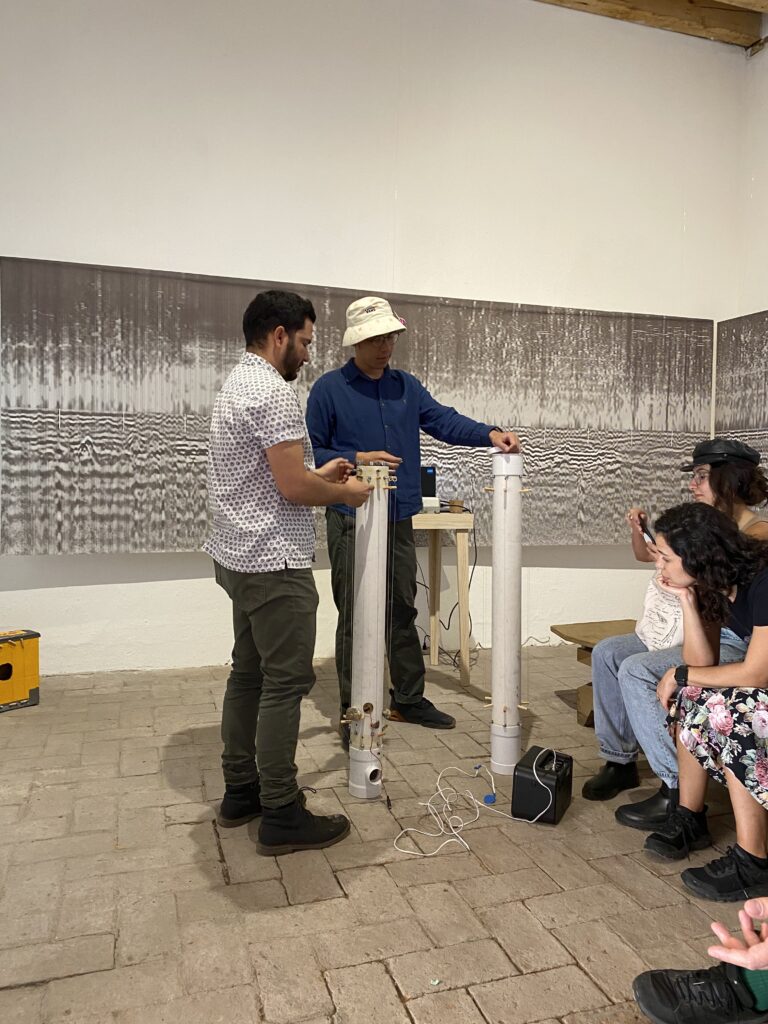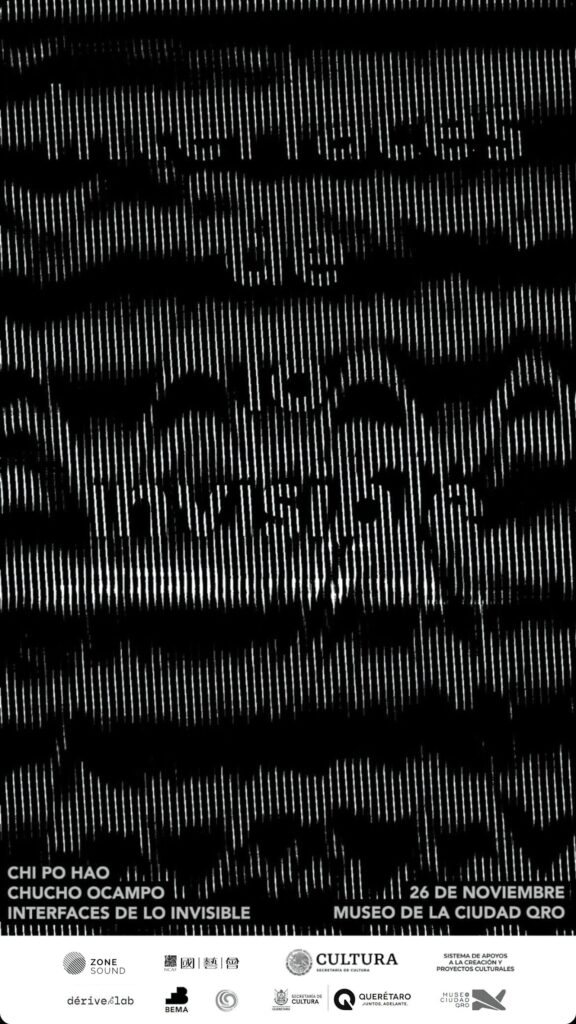
Interfaces of the Invisible (Interfaces de lo Invisible) is a cross-disciplinary project focusing on environmental perception and climate emergencies. The project brings together a team of organizations and artists, including Zone Sound Creative, dériveLAB, BEMA, Taiwanese artist Po-Hao Chi, and Mexican artist Chucho Ocampo.
The project aims to bridge the gap between the scale of ecological messages and their recipients by using contemporary art methodologies and emerging technologies to understand and recognize the climate emergency. The exhibition and public workshops invite the audience to consider their role in shaping the environment’s future and fostering a more sustainable relationship with the planet by listening and walking together.
- Opening event of the exhibition.
A vital component of the project is an instrument suspended in the courtyard, which interfaces with the atmosphere. The instrument’s strings generate vibrations that cause a hollow tubular to resonate, translating the vibrations into sound as the wind moves through it. This atmospheric instrument is connected to an FM transmitter. The shortwaves are received by a receiver that amplifies the readings in the room, activating the pulsations of both radargrams and creating a moiré effect. This overlap between the spectrogram and radargram illustrates the relationship between the geological layers and the atmosphere, highlighting the connections between sedimentation, erosion, water cycles, and the environment.
To enhance audience engagement and understanding, the Interfaces of the Invisible project includes workshops that use a geological probe and DIY Aeolian harps to collect environmental data and facilitate audience interaction and perception while walking. The artists use interdisciplinary experiments and the exchange of instrumental techniques to explore how bodily perception of nature can be translated into artistic expression and how art can respond to environmental issues through sound.
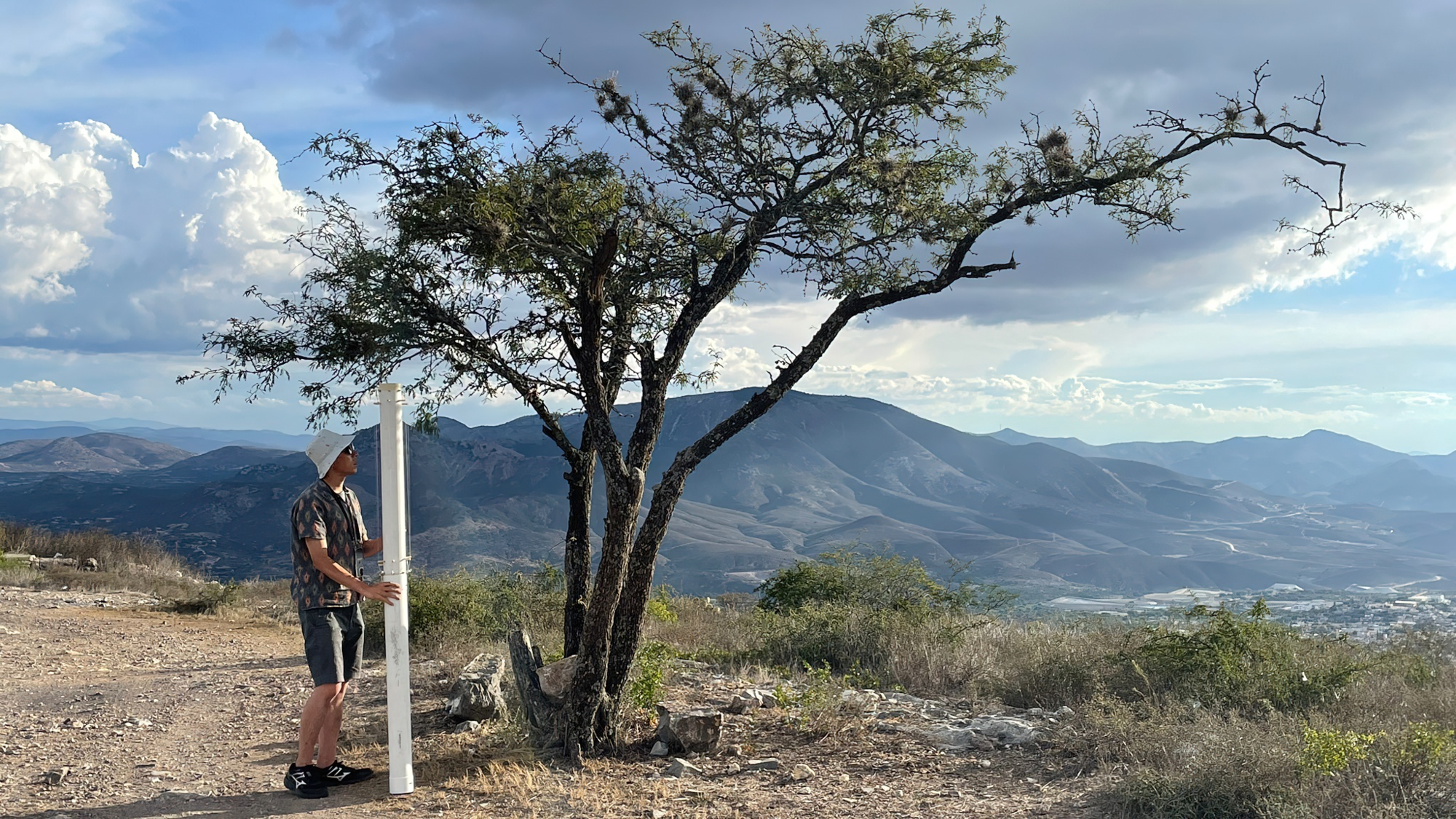
Testing the aeolianharp prototype in Zimapán.

